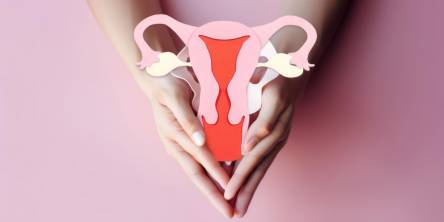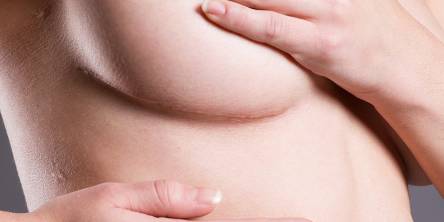5 Filshie Clips That Have Many Negative Effects

Tubal ligation is done through different techniques like using rings and clips, burning the tubes and cutting it. Filshie clips are used in the tubal ligation to tie the fallopian tubes. It is a common technique of tubal ligation which was approved to be used in the USA in the mid of 1990s. It is a small titanium clip lined with a slim silicone cushion. The use of Filshie Clips was considered as the improved technique of tubal ligation as compared to the Yoon Falope Ring and the Hulka Clip. Its application was easy and less risky because the complications were rare and it destroyed only a very small part of the fallopian tube. The Filshie clips are placed by laparoscopic surgery and they can also be used at the time of cesarean delivery.
Laparoscope
The procedure is that a small cut is made near the navel and a laparoscope with a thin instrument, is entered through the incision thus making it possible to view the fallopian tubes. A filshie clip is placed with the help of a special Filshie Clip applicator on each fallopian tube. The clip occludes the tube to prevent the eggs from entering the uterus for fertilization with sperm. The Filshie Clip squeezes the fallopian tubes very softly. It is an approximately a 20 min procedure
Method of Birth control
Some people think tubal ligation is not reversible and is the permanent birth control method but actually, Filshie clips reversal is possible.
When Filshie clips are used, only a small part of the tube is squeezed. The squeezed part does not receive the blood supply and then goes through avascular necrosis. The fallopian tube is then divided in half and then the clip is placed in between the two divided ends.
Filshie clip tubal ligation
Filshie clip tubal ligation is a safe and effective method but some women complain that these clips hurt a lot. In many cases, women complained about pain immediately after the surgery. Swelling and pain in the uterus are the common side effects and some women experience heavy bleeding. Filshie clips hurt because they are made of titanium and have a silicone lining. The general reason of pain is that the organs are soft. And when the body moves the clips give pain. A great number of women feel terrible after they have clipped their tubes so they need to remove it. There are many allergic reactions of the use of silicone. When women develop scar tissues, they also cause terrible pain.
Idea about Filshie clips
People usually think that the Filshie clips can be removed very easily to reverse the tubal ligation process. Unfortunately, tubal reversal when Filshie clips are used is not as simple. The clips are removed through microsurgical techniques and the closed ends are opened. It is easy in a way that only a small part of the tube is damaged. The patients after tubal reversal of the filshie clips have greater chances of pregnancy.
Miscarriage
Miscarriage is a situation when the pregnancy ends up on its own. It is common in the first few weeks of pregnancy. Women miscarry before 20 weeks of the pregnancy but usually it happens in the first 12 weeks. Sometimes miscarriages happen very early and a woman doesn’t even realize that she was pregnant.
Women who miscarry once usually miscarry again but it is very rare that she miscarries the third time but if she does, it is important that some tests should be done to know the cause.
Conclusion
Some women explain that after removing the clips, they felt a huge difference in their condition.
Similar Articles
If you have hip discomfort during perimenopause or beyond menopause, there may be a relationship. Reduced estrogen levels might raise your chance of getting gluteal tendinopathy. They may also contribute to osteoarthritis, which can damage several joints, including the hips.
Of the estimated total population having osteoporosis and osteoarthritis, 80% are women. One in two women over the age of 50 get serious fractures because of onset or severe osteoporosis. A bone injury at that age means serious length of recovery and difficulty in returning to normal mobility.
Breast lift surgery lifts the breasts, strengthens the tissue, and eliminates extra skin to boost elevation and better nipple positioning.
An enlarged vagina can occur as a result of unrelated events, such as the end of pregnancy or after sex. It can also be caused by vaginal irritation from wearing synthetic fabric underwear or a sexually transmitted disease such as genital herpes.
Uterine fibroids are one of the most common gynecological diseases that affect many women during their reproductive years. In this article, we will look at all aspects of this condition, including its causes, symptoms, diagnosis, treatment, and possible complications.
Polycystic ovarian disease (PCOD) is a hormonal disorder prevalent among women of reproductive age. It occurs when a woman's ovaries or adrenal glands produce higher-than-normal levels of male hormones, called androgens. This hormonal imbalance disrupts the menstrual cycle and leads to the formation of small cysts on the ovaries
Uterine fibroids are benign tumors that develop in the uterine muscle tissue. According to the US Office on Women's Health (OWH), fibroids can grow as a single tumor or as a cluster in the uterus, and they can be as small as an apple seed or as large as a grapefruit.
Your pregnancy test came back positive, and nothing, not even early pregnancy symptoms like morning sickness or exhaustion, can dampen your spirits. However, it is natural to worry about what to do when you discover you are pregnant.
A breast lift, like any other operation, involves skin incisions. Scarring occurs when your skin generates new tissues and mends the wound after an incision. There are, however, measures to reduce scarring before, during, and after a breast lift.









